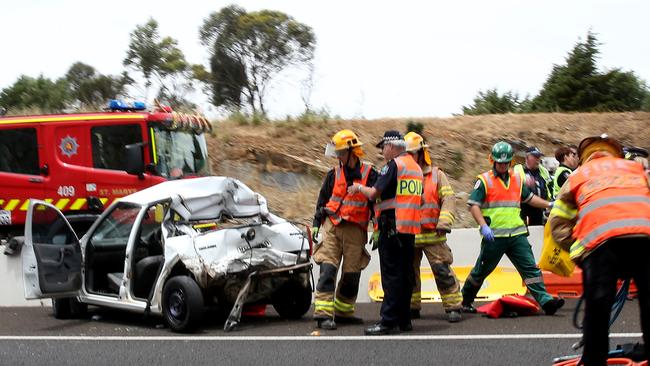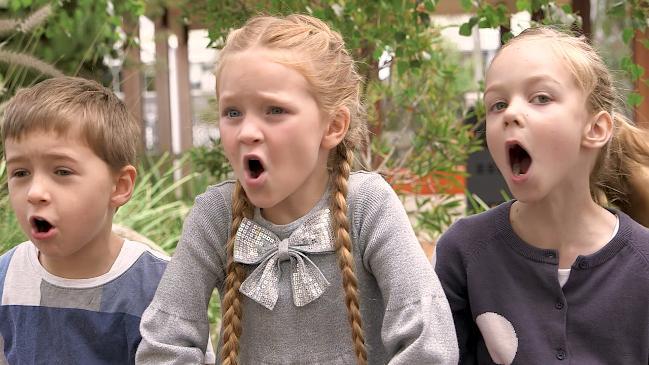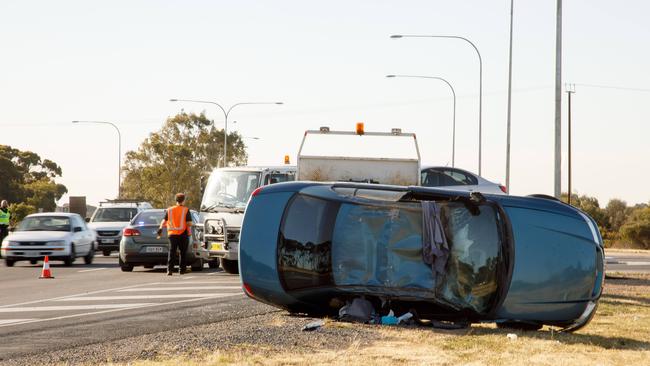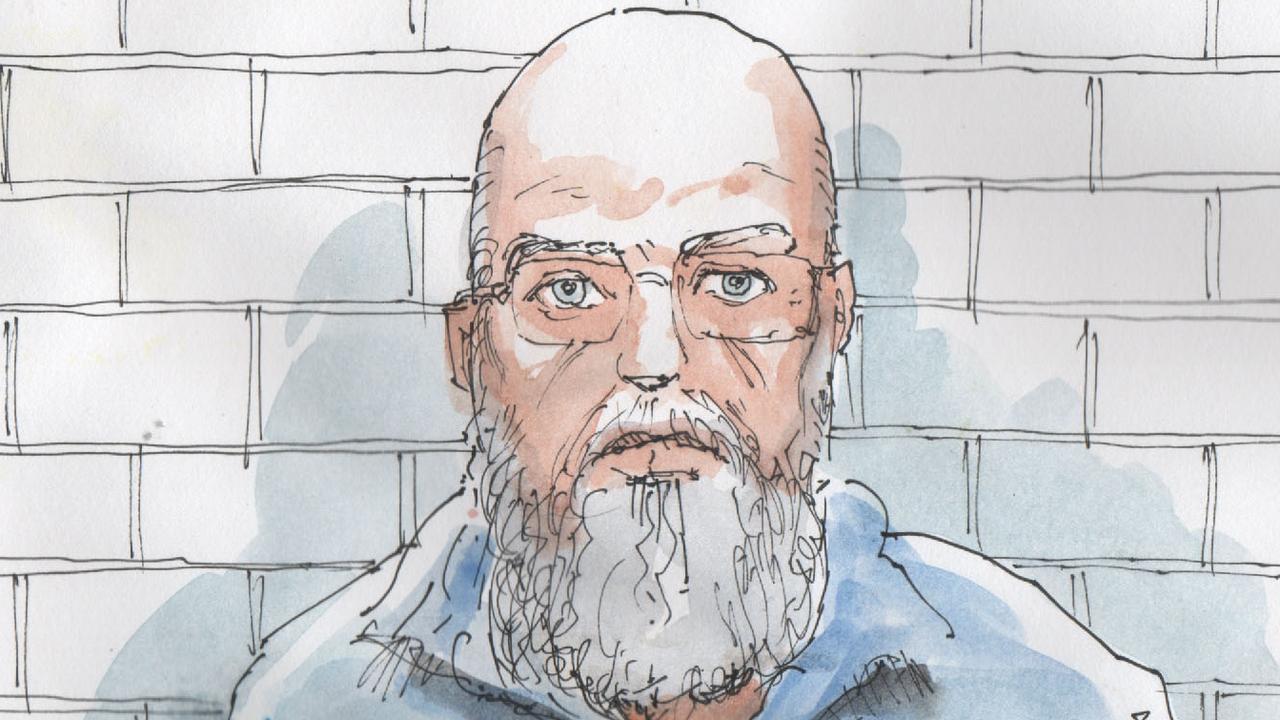South Australia’s worst road black spots revealed in data showing highest crash rates
THREE years of crash data has been compiled to show the most dangerous intersections and stretches of road across South Australia. Find out where they are.
Law and Order
Don't miss out on the headlines from Law and Order. Followed categories will be added to My News.
- State Govt announces $39 million in black spot funding
- Pedestrian death spike prompt calls for action
SOUTH Australia’s worst road black spots have been revealed in crash data obtained by The Advertiser.
Transport Department data from the three years to the end of 2016, compiled by the RAA, shows the 20 worst metropolitan and country locations for road crashes.
In the city, several intersections taking in busy South Rd and Main North Rd are crash hot spots, as well as the junction at the bottom of the South Eastern Freeway.
The Britannia Roundabout continues to be the bane of many motorists, despite an upgrade in 2013, while there have been dozens of crashes on the Southern Expressway between the Marion Rd and Panalatinga Rd interchanges.
The most common crash site, at the intersection of South Rd and Torrens Rd, should become safer when the Torrens to Torrens South Rd upgrade opens later this year.
In regional South Australia, Victor Harbor Rd, the South Eastern Freeway and the Stuart and Copper Coast highways are among the most dangerous stretches of road.
THE TOP 20 METROPOLITAN CRASH SITES
THE TOP 20 RURAL CRASH SITES
Civil Contractors Federation SA chief executive Phil Sutherland said South Australia’s road network needed a significant overhaul.
“Crash statistics largely reflect the fact that the road system in metropolitan Adelaide and regionally is about 50 years out of date,” he said.
“It has not kept pace with the changing nature of the state’s social and economic environment.
“This includes changes to population and economic growth, and the changes to motor vehicles including commercial vehicles which are longer, wider and heavier.”
Mr Sutherland said problems were exacerbated in regional areas.
“Much of the regional network was constructed soon after World War II to service an entirely different population and economy,” he said.
“We are seeing ‘catch up’ work now but there is a long way to go.
“There needs to be a rolling program of road network upgrades and proactive road maintenance based on regular road asset audits.
“Roads are our most valuable public asset but has been neglected in favour of other political priorities.
“The trend to reduce speed limits and increase fines — rather than make a realistic investment in road infrastructure — is indicative of a poor road system. All South Australians — and everyone else who travels on our roads each year — deserve better than this.”
EVERY CRASH SITE IN SOUTH AUSTRALIA 2012-2016
Mr Sutherland called on a doubling of black spot funding from all levels of government to fix roads.
“The CCF SA welcomes all forms of federal, state and local government funding commitment to improving our roads.
“This includes black spot road funding — but the allocation should be doubled or in the case of some roads include sufficient money for a complete reconstruction or duplication as the case may be. The bottom line is — let’s keep speed limits at realistic levels and stop fining people into poverty, and rather focus on building and maintaining our road network with suitable traffic management engineering solutions at a level commensurate with a modern developed country on par with many advanced countries throughout the world.”
SA Freight Council executive officer Evan Knapp said the sites in the list should be addressed with black spot funding.

“We expect to see many of these locations put up for funding under the Commonwealth and state black spots programs when the Black Spots Consultative Committee meets in early February,” he said.
“We note that four of the top 20 metro crash sites are at metro South Rd intersections — which should all be removed as concerns once the North South Corridor is completed. Urgent action to start work on sections that have not yet commenced is needed.
“It’s disappointing to see two areas on the Stuart Highway — South Australia’s primary road link to the Northern Territory — are responsible for five of the 12 rural fatalities on this list.
“This route is also an important one for heavy vehicles, and we’ll be taking a close look at Stuart Highway locations when the full black spots data set is provided to us shortly, to see if road infrastructure is a contributing factor.”

Transport Minister Stephen Mullighan pointed to several measures introduced by the State Government in an effort to improve road safety at the dangerous sites.
He said the current South Rd upgrades would improve safety at several intersections, while the installation of safety cameras at some dangerous intersections — including Main North Rd and Regency Rd, and Hampstead Rd and Grand Junction Rd — had lowered crash rates.
“The State Labor Government is investing at record levels in road maintenance and safety upgrades,” he said.
“Over four years we’re spending $532 million on projects such as road resurfacing, shoulder sealing and intersection upgrades.
“These latest statistics support (that) the Government’s significant investment in road upgrades, together with the installation of safety cameras at key locations, are reducing the number of accidents at these locations.”

Mr Mullighan said the government was also investing $341 million on maintenance and road safety improvements for regional roads, with $94 million being spent this year alone.
“This financial year approximately 596km of rural roads will be resurfaced, with a further 170km of shoulder re-sheeting and 190km of shoulder resealing.
“By contrast the Liberals want to cut regional roads funding by limiting their investment to 30 per cent of the state’s mining royalties, which would represent a cut of almost $20 million.”
Opposition road safety spokesman Stephan Knoll accused the State Government of dropping the ball on funding to fix black spots.
“The Labor Government’s Community Road Safety fund has declined in real terms over the last four years and this shows in the condition of our roads, especially across country South Australia,” Mr Knoll said.
“This is why we are pushing for a royalties for regions scheme, to quarantine 30 per cent of mining royalties, estimated at $750 million over 10 years, to help fixed the issues on country roads.
“The CCF have shown that there is a $500 million backlog of road maintenance across the state.
“The Labor Government has been slashing speed limits on regional roads, instead of investing in upgrading and maintaining our road network.”


